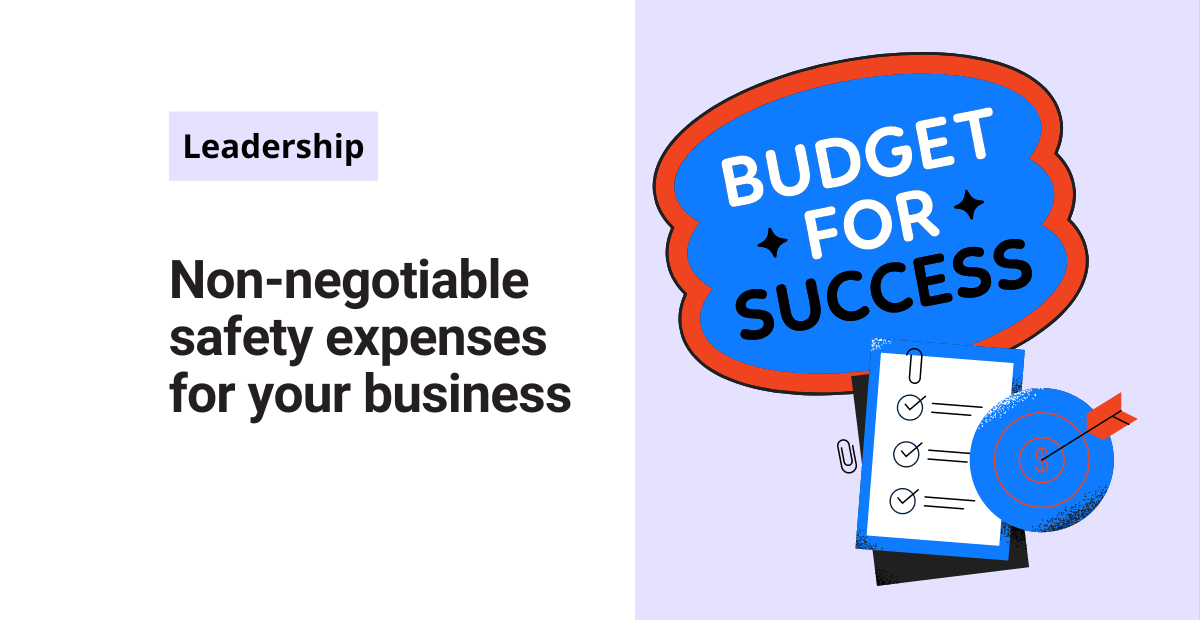In health and safety, it’s easy to spend money on safety expenses. From PPE to EHS software systems and new types of equipment, there are many expenses to consider.
In this post, I want to share those expenses, particularly safety expenses, that I consider to be non-negotiable in your safety budget. Understand that this is not an all-inclusive list, and every company will prioritize expenses differently.
There may be some room in your budget to negotiate for things like incentive programs and swag. However, these are the expenses that I will always go to bat for with upper management. They are areas I never want to skimp on when addressing safety expenses.
PPE or first aid supplies
You might have guessed this one. I would argue that to increase this line item in your safety expenses budget, you need to get more and/or better equipment. This is especially important moving forward.
You simply can’t afford to reduce expenses in this category. If it means that workers will stop wearing their PPE, make sure costs are controlled. If you reduce cost in some ways, I’d urge you to keep those cost savings in your budget (if possible) to get employees additional PPE options. Upgrades to existing ones could also be a good idea.
Industrial hygiene monitoring
Whether you hire someone to do your testing, sampling, or surveying or you do it yourself, industrial hygiene measures are non-negotiable safety expenses. You need to be sure that your workers and customers are safe from potential health hazards.
EHS training
Some of us, possibly the majority of us, have some type of training we need to outsource. At my company we currently outsource our first responder training, and it can be costly.
I mention this as a non-negotiable, however, because it should include both the training itself and the time it takes to conduct the training.
It doesn’t really matter what type of training you conduct (computer, in-person, third-party). Training is essential to any successful safety program and should be budgeted as such, as part of your safety expenses.
Compliance tools
If you still have an archaic system for compliance tracking, auditing, and reporting, it’s time to budget for regulatory compliance tools. Often, the most cost-effective option is an EHS software system. This system integrates all your compliance tasks in one platform.
These tools not only make your life much more streamlined, but they also help ensure that you don’t miss anything. Indeed, our profession consists of several moving parts.
Project expenses for improvements
This line item is a little difficult to define, as it could mean just about anything. Some of the safety expenses I’d include in this line item include things like:
- Ergonomic improvements
- Signage
- Retrofitted guarding
- Workplace design changes
Professional development
You won’t be a successful EHS leader if you don’t prioritize professional development for you and your team. I have personally seen companies not invest in this area at all. Some of them have been caught by regulatory agencies for not abiding by new laws. These laws have been implemented within the last 5 years.
If they had invested in the development of their HSE staff, I could nearly guarantee (in this situation) it would not have happened. In my opinion, when you stop learning, or think you know everything there is to know in this profession, it’s time to get out. This is important before you hurt someone.

Jason Hathcoat
Jason is a seasoned EHS professional with more than 17 years of experience working in health and safety. He currently works as an EHS manager for a large global HVAC company.




